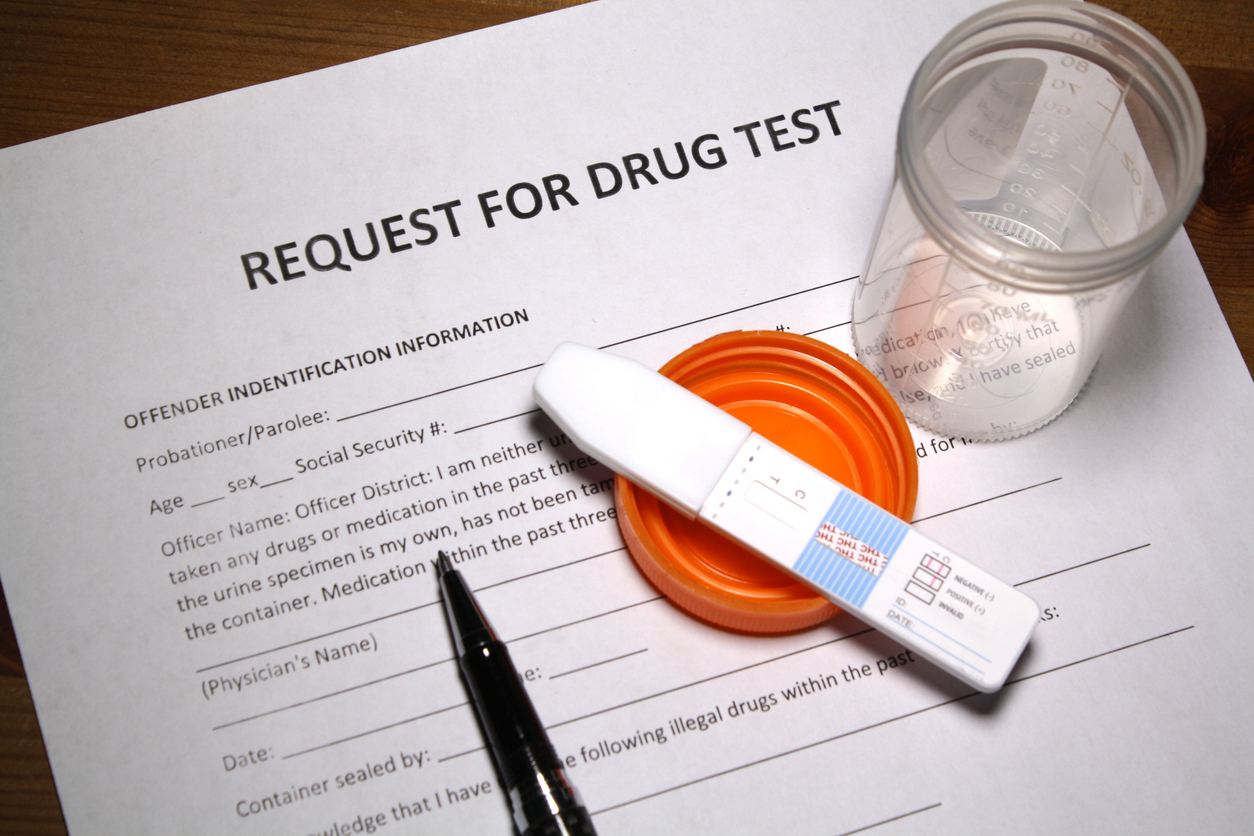Treatment Mandated Felony for Certain Drug Offenses

Treatment Mandated Felony for Certain Drug Offenses – HS 11395
If you find yourself confronting a drug-related charge, the path ahead may seem daunting. We know the thoughts circling in your mind right now. “Will I go to prison?” “How will I keep my job?” “What will my children think?” “Is this the end of everything I’ve worked for?“
At Gressley & Donaldson, we are seasoned criminal defense attorneys serving Riverside County and the Inland Empire, dedicated to transforming challenges into opportunities. Under California’s Health and Safety Code 11395, a treatment-mandated felony offers an alternative to incarceration—a structured chance to address addiction and reclaim your future.
Yes, this is your possibility of redemption. And we know how to make it work. Let us show you how. Reach out to our office now and schedule a free consultation. Call (951) 319-3199.
What Is a Treatment Mandated Felony?
Not long ago, many people thought that everyone with a drug problem belonged behind bars for committing drug crimes. Fortunately, those days are changing. A treatment mandated felony is California saying, “Hey, maybe locking people up isn’t always the answer.” It’s like the justice system finally recognized what families of those struggling with addiction have known forever: addiction is a health issue, not just a criminal one.
So what does this actually mean for you or your loved one who’s facing drug-related charges? Instead of staring at prison walls for years, you might get the chance to heal the real problem—the addiction itself. You’d participate in a detailed treatment program developed for you while on probation, actually addressing what led to the charges in the first place.
The benefits? Well, there are quite a few of them if you are facing drug crimes:
- Actually getting help for the addiction that’s been controlling your life
- Staying connected with your family when they need you most
- Keeping your job or finding new work
- Building a future instead of watching it disappear before your eyes
Navigating this option is anything but simple, as courts have their checklists and requirements for eligibility. That’s where we, here at Gressley & Donaldson, come in. We understand how to present your story in a way that highlights why treatment—not punishment—makes the most sense in your case.

California Proposition 36 and its Impact on Drug Sentencing
California has been wrestling with how to handle drug crimes for years. Back in 2014, Proposition 47 turned a lot of felony drug possession charges into misdemeanors. The result? Less jail time, lighter consequences. It was a big shift, but not everyone thought it went far enough to tackle the root of the problem: drug addiction.
Fast forward to 2024, and Proposition 36 steps onto the scene, bringing treatment mandated felony into play. But Prop 36 isn’t about going soft on crime. Rather, it’s about being smart about it. The idea? If you’re caught in this cycle of drug use and arrests, maybe punishment alone isn’t the fix. Maybe you need support to break free.
Instead of serving a sentence, people struggling with drug addiction could get:
- Actual treatment for their substance use disorder
- Regular check-ins with the court (think of it as accountability with compassion)
- Drug testing that keeps you on track
- Counseling to address the “why” behind the addiction
- Skills training to build a better future
According to data provided by the Federal Bureau of Prisons (BOP), over 43% of all inmates across the country serve their sentences for drug crimes. Proposition 36 now helps thousands of Californians take back control of their lives instead of spending years behind bars.
At Gressley & Donaldson, we’ve been privileged to be part of these transformation stories. We understand exactly how Proposition 36 works to help people fight for that second chance they deserve.
Which Drug Offenses Are Eligible for Treatment Mandated Felonies?

Okay, so you’re wondering: “Does my case qualify?” It’s a good question as not every drug charge gets this treatment-mandated felony option—it’s quite specific, but it covers a lot of ground.
Under California’s Health and Safety Code § 11395, certain drug offenses qualify as “treatment-mandated felonies.” This designation specifically targets individuals with two or more prior convictions for specific drug crimes who are subsequently charged with possession of hard drugs.
The statute applies to individuals with prior convictions for the following drug crimes:
- Possession of controlled substances (e.g., Health & Safety Code §§ 11350, 11377)
- Drug possession for sale (e.g., §§ 11351, 11378)
- Sale or transportation of controlled substances (e.g., §§ 11352, 11379)
- Manufacturing controlled substances (e.g., § 11379.6)
A prior conviction involving the possession of hard drugs such as fentanyl, heroin, cocaine (including cocaine base), methamphetamine, or phencyclidine (PCP) may be charged as a treatment-mandated felony. Note: This law does not encompass substances like cannabis, peyote, LSD, or other psychedelics.
Here’s the catch: the court has to agree you’re a good fit for drug treatment. Some of the potential deal-breakers include having prior violent felonies on your record (the system is less forgiving if anyone got hurt), getting charged with other crimes alongside drug possession, and failing treatment programs in the past.
Even if you think you wouldn’t qualify for some reason, it still could make sense to give it a shot. At Gressley & Donaldson, our criminal defense attorneys have helped people with prior drug convictions still find their way to treatment with the right legal strategy. Besides, we provide free consultations, so you have nothing to lose by discussing your situation.

Treatment and Rehabilitation
Let’s talk about what treatment actually looks like if you qualify. Don’t be mistaken. This isn’t some vacation or easy way out—it’s challenging, transformative work. But unlike prison, it’s work that actually addresses the real problem.
When you enter treatment through the HS 11395 treatment mandated felony program, here’s what your journey might include:
- Assessment: Trained professionals will take the time to learn your unique story. They’ll ask about your substance use, mental health, trauma history, and more. Your treatment plan should be as individual as you are.
- Care: There are different levels of care depending on your specific needs. Some people need detox first (a medically supervised way to get substances out of your system safely), while others may need residential treatment where you live at the facility for a time.
- Therapy: That’s the therapy that actually addresses root causes. Through individual counseling and group sessions, you’ll unpack the “why” behind the substance use. For many clients, this becomes the most healing part of their journey.
- Drug testing: This will help keep you on track and accountable. Yes, nobody loves this part, but structure and accountability are powerful tools for lasting change.
- Working with case managers: Their job is to coordinate your care and help with practical matters like finding housing, healthcare, or employment resources.
- Developing new skills: These are the essential skills for living without substances and may anything from stress management to healthy relationships to financial planning.
- Mental health treatment: This involves help with mental health challenges for the many people who struggle with both addiction and conditions like depression, anxiety, or trauma.
Recovery isn’t always a straight line. There might be setbacks along the way. But that’s normal and human. What matters is having people in your corner who don’t give up when the path gets rocky. At Gressley & Donaldson, we understand that recovery has its ups and downs. We stay connected with our clients through their treatment journey, ready to advocate if problems arise with the court or program.
Goals and Outcomes
What’s the point of all this? Why should you fight for drug treatment instead of just “doing your time”? The goals of this approach go so much deeper than just avoiding jail. Some of the goals behind treatment-mandated approaches include:
- Breaking free from the revolving door of addiction and arrests. Without addressing the addiction itself, too many people serve their sentence only to end up arrested again within months. Drug treatment aims to break this cycle.
- Healing, not just punishing. Treatment recognizes that addiction isn’t simply a choice or moral failing. Rather, it’s a health condition requiring treatment.
- Keeping families whole. Imagine how a child’s eyes light up when they learn their parent is coming home instead of going to prison. Imagine the relief of a spouse when they know their partner will get help instead of disappearing from their lives. These matters matter profoundly.
- Using tax dollars wisely. According to the Legislative Analyst’s Office, the average annual cost of incarceration is $133,000 per person. That’s a lot of money in state criminal justice costs. Treatment costs a fraction of that. It’s not just more humane—it’s smarter fiscal policy.
The big win is dismissal. Finish the program—stick to the rules, show up, do the work—and the court can toss your case out. No felony conviction. No mark on your record holding you back from jobs, housing, or just feeling normal again. At Gressley & Donaldson, we don’t just help secure your eligibility. We fight to connect you with programs truly capable of supporting your recovery journey.
How Treatment-Mandated Felonies Are Implemented and Enforced

Let’s pull back the curtain on how HS 11395 treatment mandated felony actually works:
- Eligibility assessment: This stage takes place after you’re charged but before sentencing. Your attorney will argue for your eligibility and present compelling evidence that treatment (not incarceration) serves justice best in your case.
- Pleading: The plea process typically requires pleading guilty or no contest, but here’s the key: your sentence gets suspended while you complete treatment. Think of it as the justice system pressing the “pause” button to give you a chance to heal.
- Program placement: The court assigns programs to you based on your assessment and local resources. An attorney who knows the local treatment landscape can advocate for placement in programs with better success rates and approaches that match your needs.
- Court check-ins: These become part of your routine. You’ll appear before a judge periodically who reviews your progress. These are essentially accountability checkpoints designed to keep you on track.
Completing the program successfully can result in case dismissal or reduction, which serves as a legal reward for your hard work in recovery.
The good news is that the HS 11395 treatment mandated felony for certain drug offenses framework recognizes that recovery often includes setbacks. A single misstep doesn’t automatically mean program failure. Judges have options like:
- Adjusting your treatment intensity
- Requiring more frequent court appearances
- Implementing brief “motivational” jail stays
- Modifying your treatment plan to better address emerging challenges
At Gressley & Donaldson, we stay actively involved throughout your treatment journey. We’ve built solid relationships with treatment providers, probation departments, and courts throughout Riverside County and the Inland Empire over years of practice. When challenges arise, we can often intervene quickly, contextualizing setbacks and advocating for continued treatment rather than program termination.
If you’d want to discuss whether a treatment mandated felony program is appropriate in your specific case, reach out to our office for a free consultation. Call at (951) 319-3199 or fill out our contact form to get started.
Frequently Asked Questions

Will I avoid jail time with treatment?
While avoiding incarceration is the primary goal, some programs include brief jail stays, especially if the person violates program rules. And if you don’t complete the treatment program successfully, you could face the original jail or prison sentence that was put on hold. That said, many of our clients never see the inside of a jail cell when they commit to their treatment plan.
How long will this treatment program take?
Most people spend between 12 and 18 months in court-ordered treatment, but it’s not one-size-fits-all. Your personal progress matters. Some people complete programs more quickly, while others may need more time. Think of it as recovery on your own timeline, with the court providing structure and oversight.
Will this felony follow me forever even after treatment?
It depends. In some cases, successful completion can lead to case dismissal or reduction to a misdemeanor. Your specific charge and prior criminal history play huge roles here. At Gressley & Donaldson, fighting for the cleanest possible record outcome is always part of our strategy.
Can I pick my own treatment program?
While courts typically assign specific programs, don’t underestimate the power of good legal advocacy. We regularly secure placement in programs that better fit our clients’ needs, whether that’s location (so you can remain near your family), program philosophy, or specific services offered.
What if I slip up during the program?
In most cases, a single relapse doesn’t automatically mean failure. The potential consequences depend on the circumstances, your overall compliance, and how you handle the situation afterward. If you work with an attorney, they will advocate for continued treatment rather than program termination.
contact us to start building your defense
We understand that being accused of a crime is one of the most challenging times of your life. Rely on us to advocate for your rights and to give you the defense you deserve.
